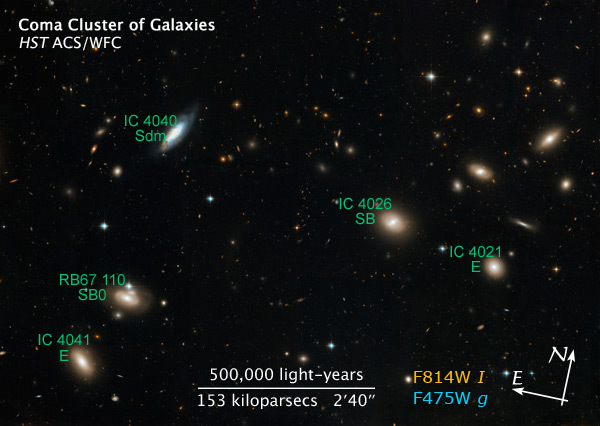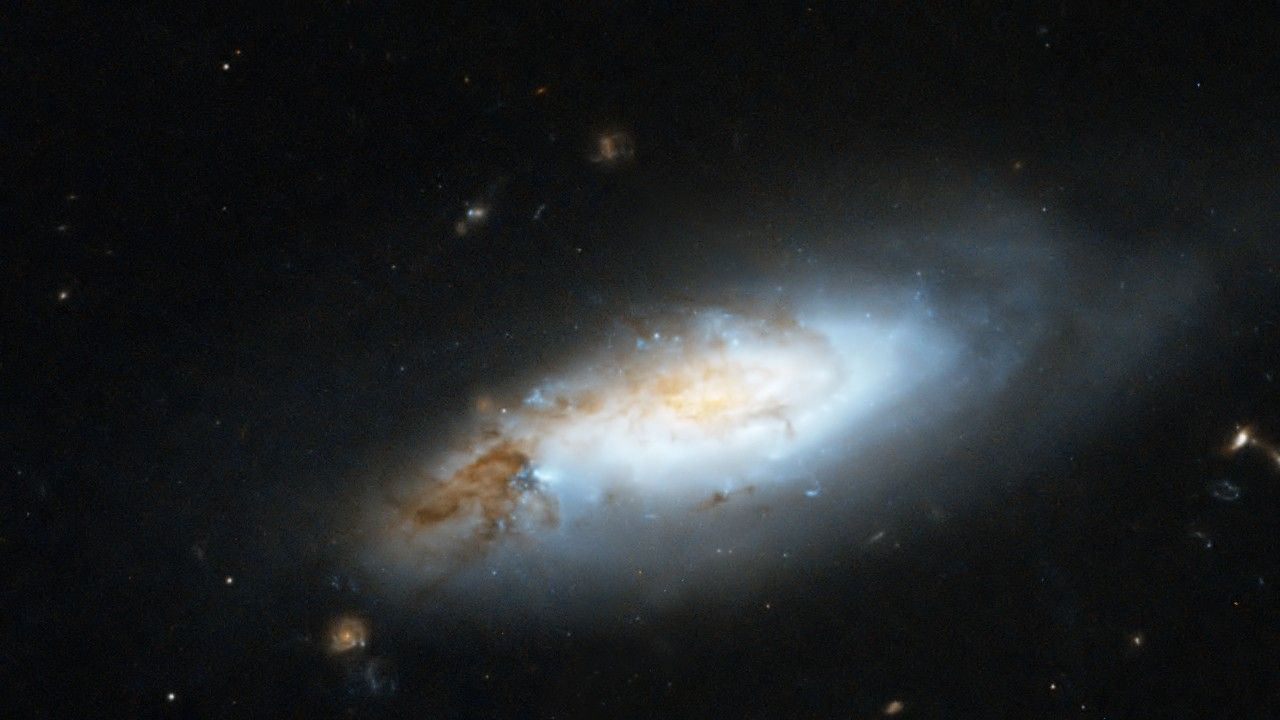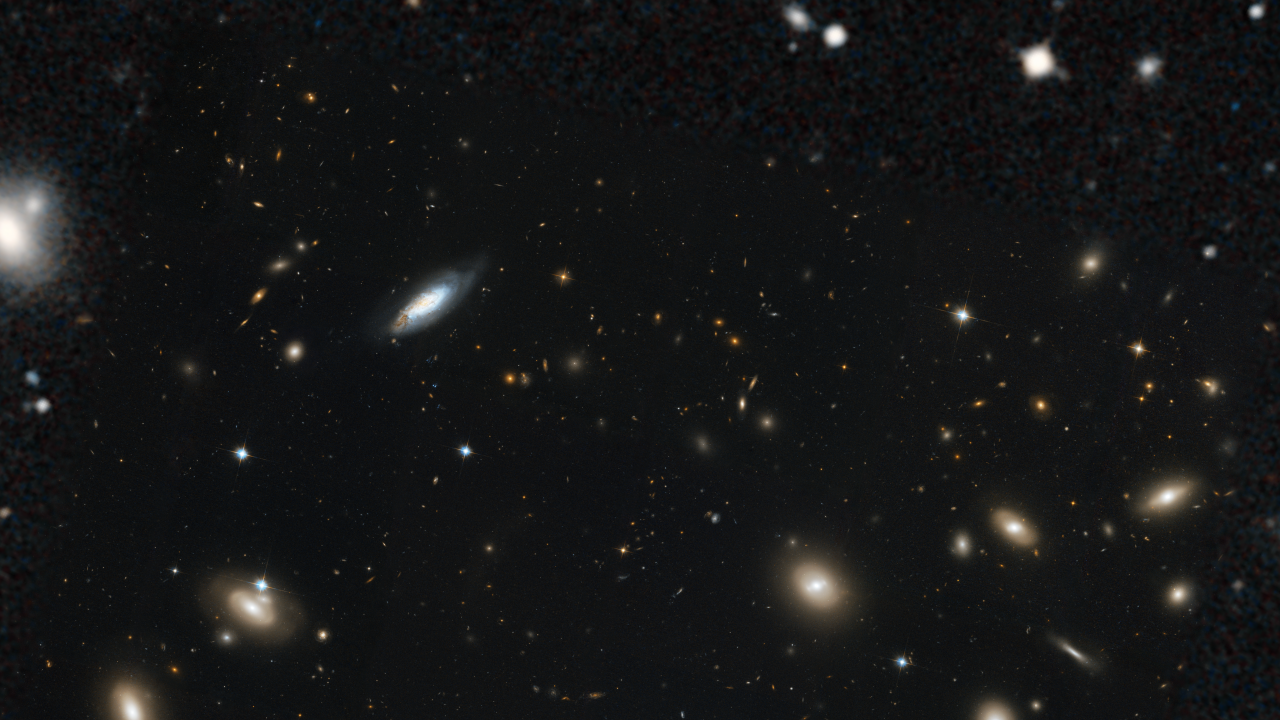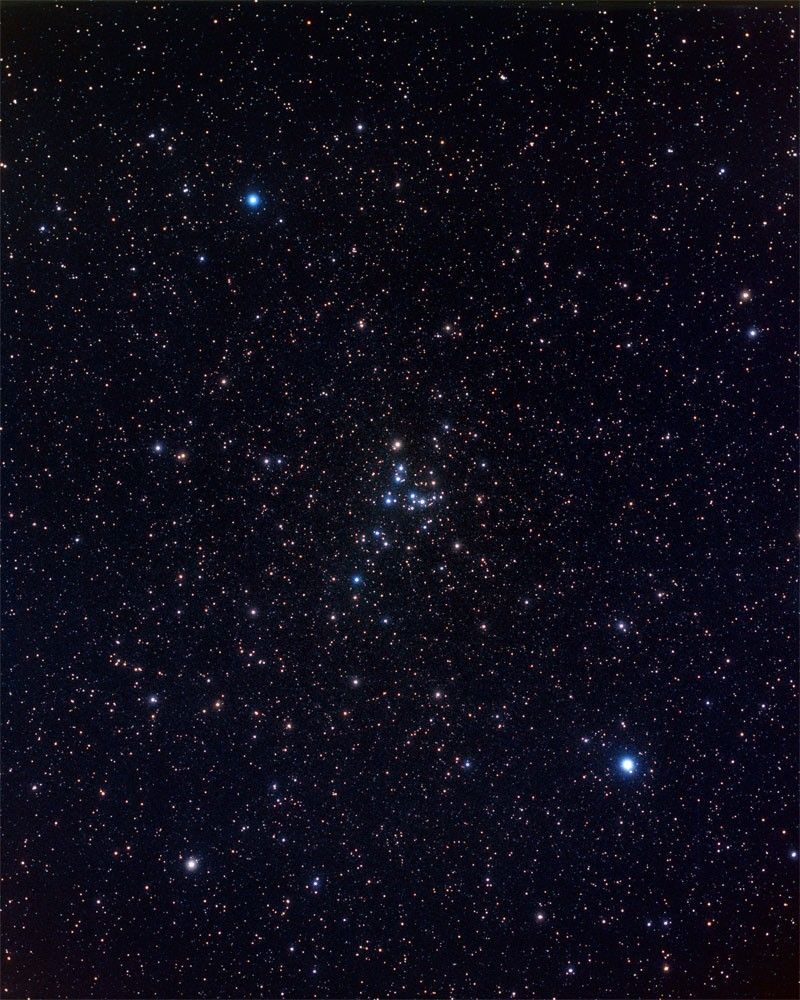1 min read
Hubble’s Sweeping View of the Coma Cluster of Galaxies

NASA's Hubble Space Telescope captures the magnificent starry population of the Coma Cluster of galaxies, one of the densest known galaxy collections in the universe.
The Hubble's Advanced Camera for Surveys viewed a large portion of the cluster, spanning several million light-years across. The entire cluster contains thousands of galaxies in a spherical shape more than 20 million light-years in diameter.
Also known as Abell 1656, the Coma Cluster is over 300 million light-years away. The cluster, named after its parent constellation Coma Berenices, is near the Milky Way's north pole. This places the Coma Cluster in an area unobscured by dust and gas from the plane of the Milky Way, and easily visible by Earth viewers.
Most of the galaxies that inhabit the central portion of the Coma Cluster are ellipticals. These featureless "fuzz-balls" are pale goldish brown in color and contain populations of old stars. Both dwarf, as well as giant ellipticals, are found in abundance in the Coma Cluster.
Farther out from the center of the cluster are several spiral galaxies. These galaxies have clouds of cold gas that are giving birth to new stars. Spiral arms and dust lanes "accessorize" these bright bluish-white galaxies that show a distinctive disk structure.
In between the ellipticals and spirals is a morphological class of objects known as S0 (S-zero) galaxies. They are made up of older stars and show little evidence of recent star formation; however, they do show some assemblage of structure – perhaps a bar or a ring, which may give rise to a more disk-like feature.
This Hubble image consists of a section of the cluster that is roughly one-third of the way out from the center of the cluster. One bright spiral galaxy is visible in the upper left of the image. It is distinctly brighter and bluer than galaxies surrounding it. A series of dusty spiral arms appears reddish brown against the whiter disk of the galaxy, and suggests that this galaxy has been disturbed at some point in the past. The other galaxies in the image are either ellipticals, S0 galaxies, or background galaxies far beyond the Coma Cluster sphere.
The data of the Coma Cluster were taken as part of a survey of a nearby rich galaxy cluster. Collectively they will provide a key database for studies of galaxy formation and evolution. This survey will also help to compare galaxies in different environments, both crowded and isolated, as well as to compare relatively nearby galaxies to more distant ones (at higher redshifts).
About the Object
- R.A. PositionR.A. PositionRight ascension – analogous to longitude – is one component of an object's position.12h 59m 48.72s
- Dec. PositionDec. PositionDeclination – analogous to latitude – is one component of an object's position.27° 58' 50.48"
- ConstellationConstellationOne of 88 recognized regions of the celestial sphere in which the object appears.Coma Berenices
- DistanceDistanceThe physical distance from Earth to the astronomical object. Distances within our solar system are usually measured in Astronomical Units (AU). Distances between stars are usually measured in light-years. Interstellar distances can also be measured in parsecs.300 million light-years or 90 million parsecs
- DimensionsDimensionsThe physical size of the object or the apparent angle it subtends on the sky.The image is approximately 9 arcminutes (1.7 million light-years or 500 kiloparsecs) wide.
About the Data
- Data DescriptionData DescriptionProposal: A description of the observations, their scientific justification, and the links to the data available in the science archive.
Science Team: The astronomers who planned the observations and analyzed the data. "PI" refers to the Principal Investigator.HST Proposal: 10861 D. Carter (Liverpool John Moores University) and collaborators. - InstrumentInstrumentThe science instrument used to produce the data.HST>ACS/WFC
- Exposure DatesExposure DatesThe date(s) that the telescope made its observations and the total exposure time.November, 2006 - January, 2007, Exposure Time: 12 hours
- FiltersFiltersThe camera filters that were used in the science observations.F475W (SDSS g), F814W (I)
- Object NameObject NameA name or catalog number that astronomers use to identify an astronomical object.Coma Cluster, Abell 1656
- Object DescriptionObject DescriptionThe type of astronomical object.Galaxy Cluster
- Release DateJune 10, 2008
- Science ReleaseHubble’s Sweeping View of the Coma Cluster of Galaxies
- CreditNASA, ESA, and the Hubble Heritage Team (STScI/AURA); Acknowledgment: D. Carter (Liverpool John Moores University) and the Coma HST ACS Treasury Team

The image is a composite of several separate exposures made by the ACS instrument on the Hubble Space Telescope. Two filters were used to sample broad wavelength ranges in the yellow and near infrared. The color results from assigning different hues (colors) to each monochromatic image. In this case, the assigned colors are: Cyan: F475W (SDSS g) Orange: F814W (I)

Related Images & Videos

Hubble Focuses on Coma Cluster of Galaxies (Zoom and Pan)
The Coma Cluster of galaxies is one of the densest collections of galaxies in the universe. The Hubble Space Telescope's Advanced Camera for Surveys viewed a large portion of the cluster, spanning several million light-years across. This cluster contains thousands of galaxies...

Zooming into the Coma Cluster of Galaxies
The Coma Cluster of galaxies is one of the densest collections of galaxies in the universe. The Hubble Space Telescope's Advanced Camera for Surveys viewed a large portion of the cluster, spanning several million light-years across. This cluster contains thousands of galaxies...
Share
Details
Claire Andreoli
NASA’s Goddard Space Flight Center
Greenbelt, Maryland
claire.andreoli@nasa.gov




































